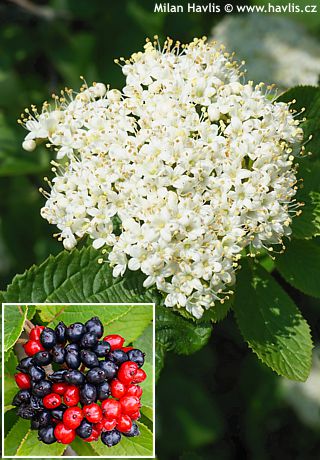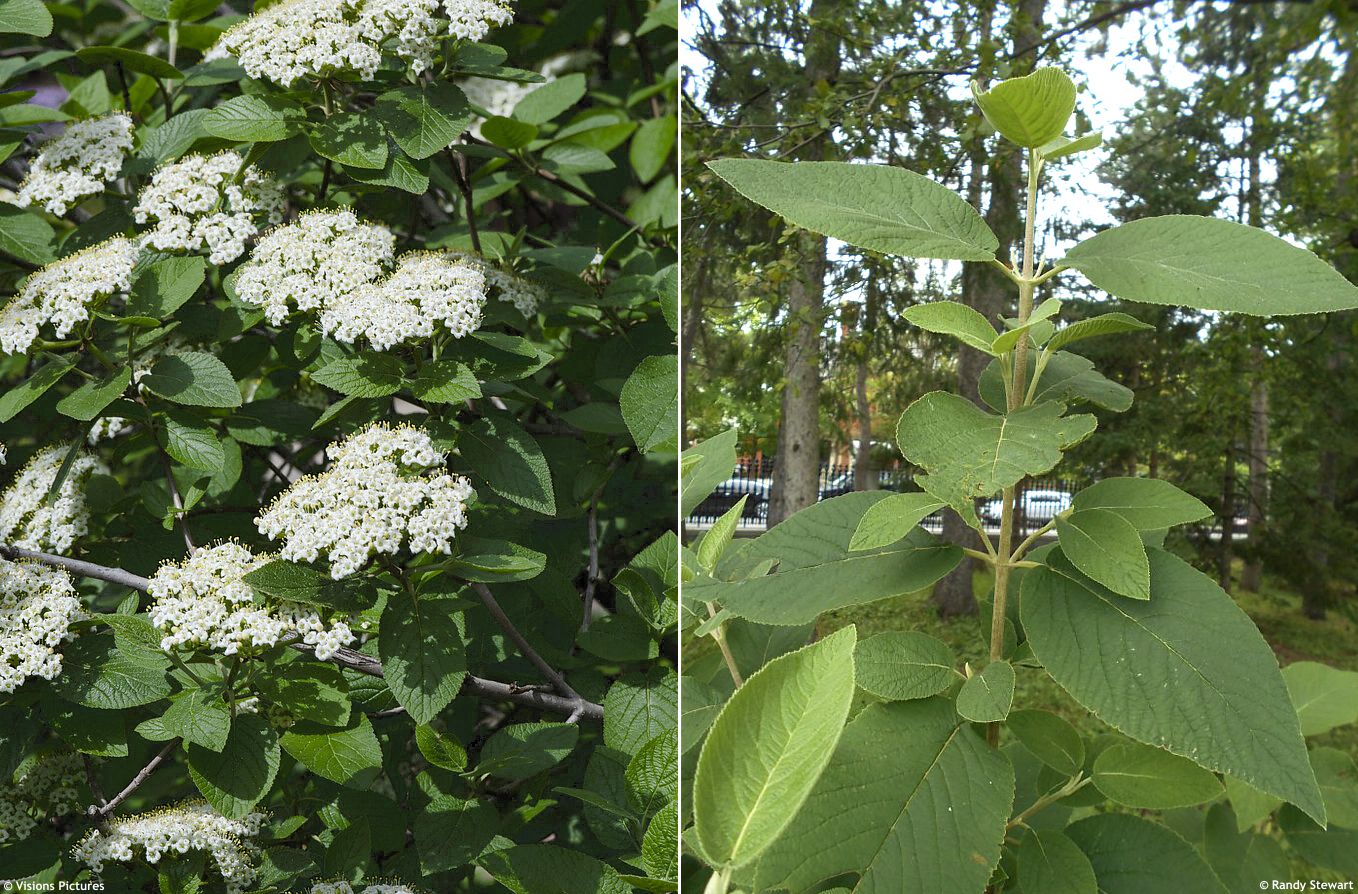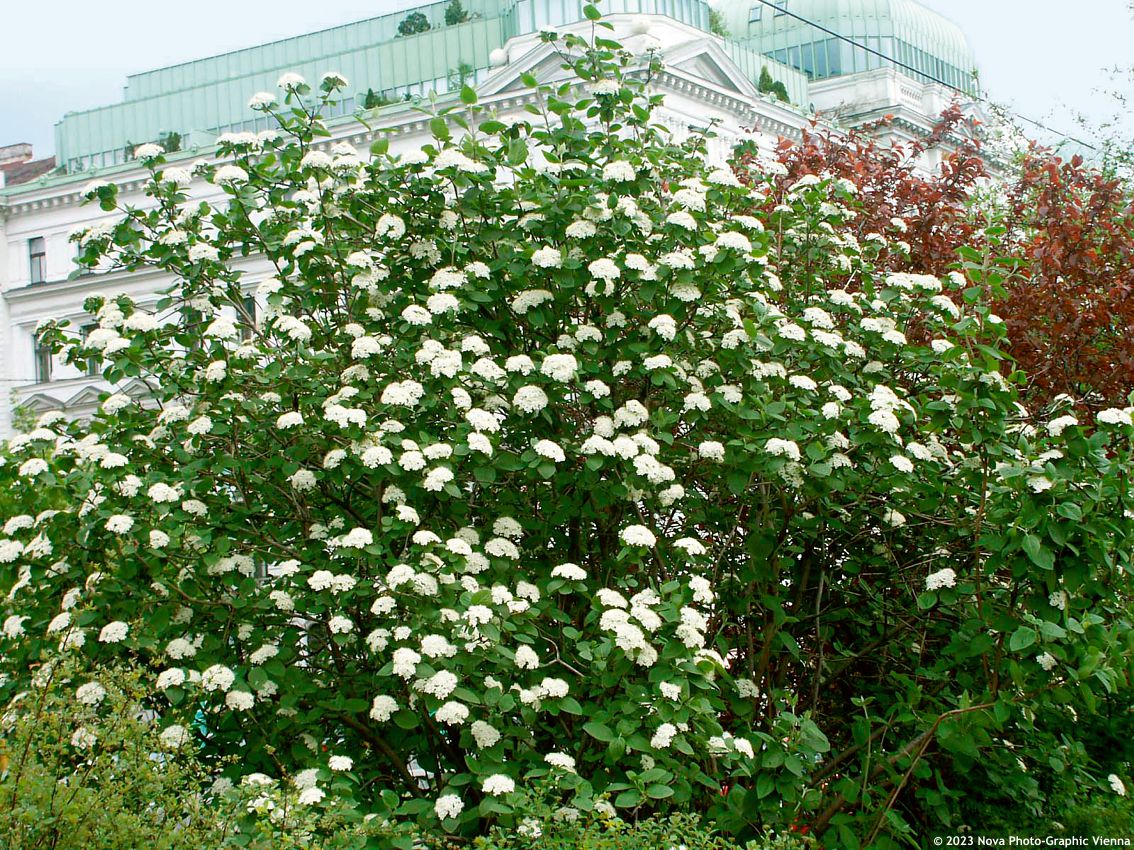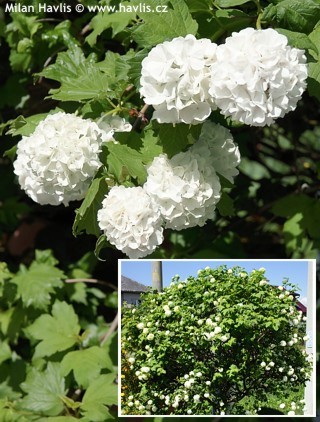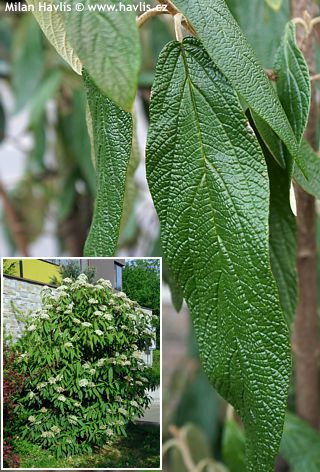Viburnum lantana wayfaring tree


It features large, leathery, broadly oval, slightly hairy leaves 6-12 cm long. They are deciduous, medium green and usually turn scarlet red or maroon in autumn. It blooms profusely from May to June with up to 10 cm wide cymes composed of small, white, strongly scented flowers, which are followed in late summer by very attractive, glossy red fruits for about a month before turning black. They are non-poisonous, nor edible, and provide plenty of food for birds as well as melliferous flowers offer plenty of food for bees and other insects.
It grows rather fast and forms strong, upright, slightly hairy canes that form lateral branches later. The habit is rounded and spreading, you can expect both height and width of fully mature plants up to 5 meters without pruning. Still, in gardens we often pruned it to keep it smaller and bushier. Do so immediately after flowering. You will lose fruit, but not flowers, which would certainly happen if you pruned it in spring. Pruning after fruit production is also possible but may still reduce the number of flowers for the following year. Well-kept shrubs make a beautiful specimen in any garden. It is often used for flowering hedges, eco-gardens, forest parks and public green spaces.
Deciduous viburnums grow in any well-drained, medium fertile soil. Wayfaring tree thrives in full sun and high pH soils (alkaline) but will cope with slightly acidic pH as well as part shade. It cannot stand in wet ground but withstands long-lasting drought once established. It is extremely hardy to approx. -44 °C (USDA zone 2).
Last update 19-01-2023
Goods are shipped all over Europe. For Russia and U.K. and for further details please read about SHIPPING OPTIONS HERE.
Are you interested in a serious discount for orders NOV-FEB? Check your options here.
THE PRICES INCLUDE VAT of 15%. For quick conversion you can use 1 CZK = approx. 0.04 EUR
- STANDARD QUALITY - Plants of this group are 1st class quality with number of branches and overall density adequate to their size and age, considering they were container grown.
- DE LUXE QUALITY - This label guarantees a luxurious quality of manually selected plants that, compared to their height and age, are exceptionally dense and beautiful.
- EXTRA - These plants are usually mature and bigger specimens with exceptional overall appearance.
- STANDARD (as described in the plant form) means a tree with a trunk of 190-210 cm and a crown at the top, unless specified differently. The commercial size for trees is their girth measured in the height of 1m from ground.
- HOBBY - These plants are of the same quality as our standard-quality plants but younger and therefore cheaper.
- SHRUB - a woody plant with branches growing bushy from the ground level.
- HALF-STANDARD or MINI-STANDARD - a small tree with shorter trunk, its size is usually specified.
- FEATHERED - These are trees with branches growing already from the base of the trunk and up along the stem.
- GRASSES and PERENNIALS - Sizes given usually read the diameter of the pot or the clump, as specified.












